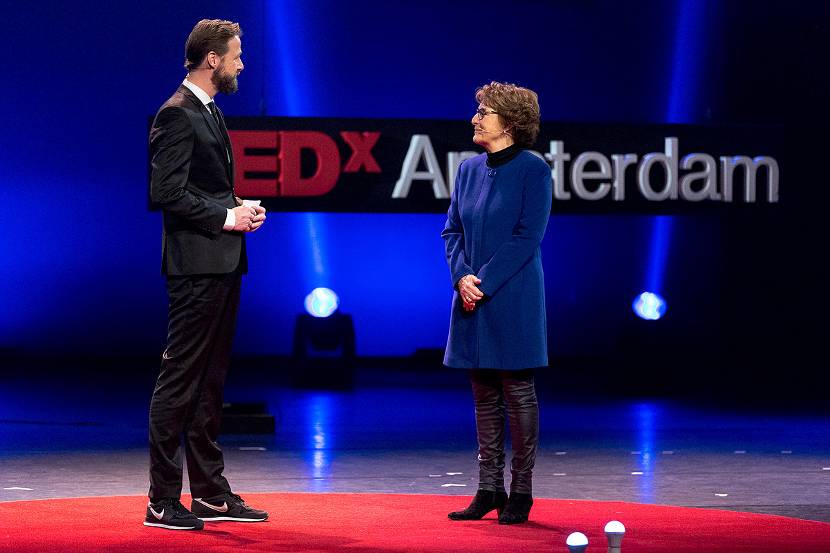Toespraak Prinses Margriet over hulp bij natuurrampen, TedxAmsterdam
Deze toespraak is uitgesproken in het Engels.
Prevention is better than cure! We all know this, yet: Do we walk our talk? Rhetorical question! In particular for natural disasters: they have doubled in the last decade. So has the number of victims. So what to do about it? Today I am going to share with you how we can turn 1 Euro to 7 Euro. I am not a magician and not even good at mathematics. I am here simply as someone who has seen the impacts of too many disasters, especially during my many years working with the Red Cross and Red Crescent Movement. Let’s go back to the story.

Natural hazards occur, but how to prevent them to become full scale humanitarian disasters? Although we can predict disasters better nowadays, not nearly enough action has been taken to address the root causes nor the consequences. Governments and aid organizations usually act after a disaster has taken place. We react - instead of proact. The result: A host of problems: like refugee flows, epidemics, families being split up, immense material damage, increase of poverty, to name but a few. This is not a stand-alone problem. We see the need for a broader perspective to understand the root causes of risk, including its connections to the natural environment. Heavy rainfall, rainstorms ever more erratic, floods and mudflows because of deforestation. Increasing drought when the retention capacity of the soil is lost or pastures left barren by overgrazing….It usually hits the poorest people in the poorest countries people who contributed least to these disasters.
Weather related calamities increase. But the funds to cope in fighting them do not increase. We are fighting a running battle. So for us in the Red Cross it leads to focus on prevention and risk reduction, where traditionally we were relief-oriented. Yes: Emergency relief is needed. Emergency relief remains necessary. But emergency relief is not enough! Again, we must be proactive...That sounds very rational, but it hardly happens. Prevention works - but it is not sexy. Media attention after a calamity usually works better for fundraising. Picture all the human suffering...That triggers you immediately into action!
Imagine all that money spent on reconstruction and development is wasted when natural disasters recur and destroy everything again and again! How can we make a difference? We need a new holistic approach. Starting with simple preventive means and showing how and thát it works. It’s essential to make smart contingency plans. Such as: early warning systems, evacuation plans, building check dams and bridges, as well as disaster proof houses and schools, peer education in primary health, water safety, planning storage and - adaptation of ecosystems - All these plans by involving the populations at risk in cooperation with stakeholders up and down the chain, creating solutions to be better prepared when disaster strikes.
To give you an example: Bangladesh! I have been to Bangladesh and have seen that all these measures work and make a tremendous difference in preserving lives and livelihoods! It boosts people’s resilience and creates a feeling of ownership. And it makes them proud and makes me feel so proud to be part of it! It proves disaster risk reduction works. With this approach we make maximum use of aid donations.
By investing 1 Euro in prevention we save7 Euro on emergency relief!....Until now my Red Cross Fund is the only disaster risk reduction fund worldwide - according to the UN. I hope our Red Cross initiative will be followed to change mindsets…so we can make a real difference.